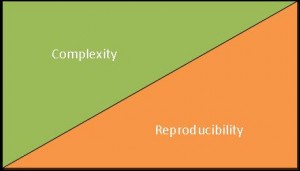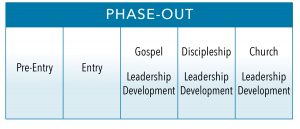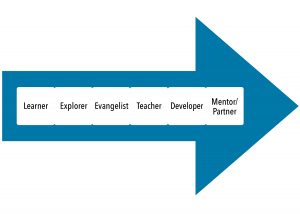3 Keys to Equipping Planters
Field-tested training that church planters need today.

This post is the seventh in the series of how The Church at Brook
Hills is sending church planters to the North American context. In case
you missed them, here are the previous posts:
Our Process for Sending Teams
Pathway to the Field
19 Points to Ponder for Potential Church Planters
6 C’s of Our Church Planter’s Assessment
Three Tools to Begin Your Church Planter Assessment
Three More Tools for Assessing Church Planters
The next step in our Pathway to the Field is the Equipping Step. As mentioned before, the Assessment and Equipping Steps are interdependent. While there is baseline equipping for every team, matters revealed in the Assessment Step and the unreached people group among whom the team will be serving, influence certain details of the Equipping Step. A one-size-fits-all approach is not appropriate for each team.
A great deal of the theology and missiology supporting our Equipping Step is outlined in my book Apostolic Church Planting: Birthing New Churches from New Believers. If you want more information than this blog series provides, please check out the book.
Before addressing specifics, it is important to get a vision of our approach.
Equip Them to Keep Things Biblically Simple
What is being generally taught, modeled and expected for North American church planters is something very few Kingdom citizens can reproduce. If the first-century disciples approached church planting with the complexity we have in North America, the gospel would have never left the Middle East. Men do not turn the world upside down through complexity (Acts 17:6). All of the residents of Asia do not hear the word of the Lord via complexity (Acts 19:10). New believers do not become imitators of us and the Lord if we model complexity (1 Thes 1:6). The faith does not go forth through Macedonia, Achaia and everywhere through complex means (1 Thes 1:6-8).
Almost everything (almost) being taught and expected, among North American evangelicals, at best, will inch the church toward multiplication. We are a complex people with complex expectations. We imitate what we know, and we know what has been modeled before us. Therefore, one of the most difficult things for us to do is to keep things biblically simple when equipping church planters.
There is an inverse relationship between the complexity of our training and expectations and the multiplication of disciples, leaders and churches.

A greater ecclesiastical complexity generally diminishes reproducibility. And if we pastors struggle with this matter, then how much more will our trainees struggle? They will model what we model before them.
Equip Them to Begin With the End in Mind
Most church planters have an endvision of pastoring a single church—with the desire (hopefully) of sending out future church planters in three to five years. In view of the five billion without Christ, we must not settle for this most being the expected way. Rather, this most needs to be the exception and not the norm. Church planters need a vision of churches planted from Jerusalem to Illyricum and have the “ambition to preach the gospel, not where Christ has already been named” (Rom 15:19-20).
Practically, this means equipping them for phasing out from the work so they can work elsewhere.

While the church planting process is not as linear as this diagram reveals, it does give the vision I have in mind. From before the team arrives on the field (pre-entry) to the time the church is self-identified and with her own elders, the team is thinking about, planning for and equipping the people for their departure. This is not abandonment. Rather, it is a leadership approach modeled by both Jesus and Paul. Planned phase-out is a thread that runs through the overall strategy, and planters must be equipped for such tasks (for more on phase-out, see Tom Steffen’s book Passing the Baton: Church Planting that Empowers).
Equip Them for Planned Role Changes
Related to a phase-out approach is the need for the team to be equipped for planned role changes. In most North American church planting contexts, role changes do not extend to the church planters appointing elders (Acts 14:23; Titus 1:5) to replace themselves, but more likely involve changes such as the church planters not teaching the only weekly small group, not being the only persons setting up the chairs on Sunday morning, or not being the only persons greeting people at the door. While the equipping of others to take on such roles is important (I am not belittling this at all—I have felt this need and been there), there is much more to Eph 4:11-12 (and what we read of Paul’s apostolic example) than church planters no longer having to type and print the worship guides each week.
The new believers must increase, the church planters must decrease. The team never abandons the churches. Rather, they become co-laborers with the new believers as the gospel continues to spread.
 Again,
the church planting process is not as linear as this diagram appears.
For example, the team will always be Learners. They will always be doing
the work of Evangelists. They will always be Teachers. However, the
emphasis here is on movement and equipping. Over time, the team is less
and less involved in certain roles because they are equipping new
believers to be more and more involved in those roles. The team does
less evangelism as the new believers become more involved in preaching
the gospel. The team does less teaching as they equip the new elders
with theological education.
Again,
the church planting process is not as linear as this diagram appears.
For example, the team will always be Learners. They will always be doing
the work of Evangelists. They will always be Teachers. However, the
emphasis here is on movement and equipping. Over time, the team is less
and less involved in certain roles because they are equipping new
believers to be more and more involved in those roles. The team does
less evangelism as the new believers become more involved in preaching
the gospel. The team does less teaching as they equip the new elders
with theological education.
These three guidelines for equipping church planters represent a paradigm shift. This shift is a shock to the system of most North American evangelicals. It is a shift that most churches, denominations, agencies, networks and individuals will not likely make within the present milieu. I hope and pray that I am wrong.
But there are encouraging signs. Some people and churches have made a change to a more apostolic approach. Others are trying. Others are praying and thinking about it. No change is easy, especially a paradigm shift.
In my next post, I plan to share more about our approach to the Equipping Step.
Our Process for Sending Teams
Pathway to the Field
19 Points to Ponder for Potential Church Planters
6 C’s of Our Church Planter’s Assessment
Three Tools to Begin Your Church Planter Assessment
Three More Tools for Assessing Church Planters
The next step in our Pathway to the Field is the Equipping Step. As mentioned before, the Assessment and Equipping Steps are interdependent. While there is baseline equipping for every team, matters revealed in the Assessment Step and the unreached people group among whom the team will be serving, influence certain details of the Equipping Step. A one-size-fits-all approach is not appropriate for each team.
A great deal of the theology and missiology supporting our Equipping Step is outlined in my book Apostolic Church Planting: Birthing New Churches from New Believers. If you want more information than this blog series provides, please check out the book.
Before addressing specifics, it is important to get a vision of our approach.
Equip Them to Keep Things Biblically Simple
What is being generally taught, modeled and expected for North American church planters is something very few Kingdom citizens can reproduce. If the first-century disciples approached church planting with the complexity we have in North America, the gospel would have never left the Middle East. Men do not turn the world upside down through complexity (Acts 17:6). All of the residents of Asia do not hear the word of the Lord via complexity (Acts 19:10). New believers do not become imitators of us and the Lord if we model complexity (1 Thes 1:6). The faith does not go forth through Macedonia, Achaia and everywhere through complex means (1 Thes 1:6-8).
Almost everything (almost) being taught and expected, among North American evangelicals, at best, will inch the church toward multiplication. We are a complex people with complex expectations. We imitate what we know, and we know what has been modeled before us. Therefore, one of the most difficult things for us to do is to keep things biblically simple when equipping church planters.
There is an inverse relationship between the complexity of our training and expectations and the multiplication of disciples, leaders and churches.

A greater ecclesiastical complexity generally diminishes reproducibility. And if we pastors struggle with this matter, then how much more will our trainees struggle? They will model what we model before them.
Equip Them to Begin With the End in Mind
Most church planters have an endvision of pastoring a single church—with the desire (hopefully) of sending out future church planters in three to five years. In view of the five billion without Christ, we must not settle for this most being the expected way. Rather, this most needs to be the exception and not the norm. Church planters need a vision of churches planted from Jerusalem to Illyricum and have the “ambition to preach the gospel, not where Christ has already been named” (Rom 15:19-20).
Practically, this means equipping them for phasing out from the work so they can work elsewhere.

While the church planting process is not as linear as this diagram reveals, it does give the vision I have in mind. From before the team arrives on the field (pre-entry) to the time the church is self-identified and with her own elders, the team is thinking about, planning for and equipping the people for their departure. This is not abandonment. Rather, it is a leadership approach modeled by both Jesus and Paul. Planned phase-out is a thread that runs through the overall strategy, and planters must be equipped for such tasks (for more on phase-out, see Tom Steffen’s book Passing the Baton: Church Planting that Empowers).
Equip Them for Planned Role Changes
Related to a phase-out approach is the need for the team to be equipped for planned role changes. In most North American church planting contexts, role changes do not extend to the church planters appointing elders (Acts 14:23; Titus 1:5) to replace themselves, but more likely involve changes such as the church planters not teaching the only weekly small group, not being the only persons setting up the chairs on Sunday morning, or not being the only persons greeting people at the door. While the equipping of others to take on such roles is important (I am not belittling this at all—I have felt this need and been there), there is much more to Eph 4:11-12 (and what we read of Paul’s apostolic example) than church planters no longer having to type and print the worship guides each week.
The new believers must increase, the church planters must decrease. The team never abandons the churches. Rather, they become co-laborers with the new believers as the gospel continues to spread.
 Again,
the church planting process is not as linear as this diagram appears.
For example, the team will always be Learners. They will always be doing
the work of Evangelists. They will always be Teachers. However, the
emphasis here is on movement and equipping. Over time, the team is less
and less involved in certain roles because they are equipping new
believers to be more and more involved in those roles. The team does
less evangelism as the new believers become more involved in preaching
the gospel. The team does less teaching as they equip the new elders
with theological education.
Again,
the church planting process is not as linear as this diagram appears.
For example, the team will always be Learners. They will always be doing
the work of Evangelists. They will always be Teachers. However, the
emphasis here is on movement and equipping. Over time, the team is less
and less involved in certain roles because they are equipping new
believers to be more and more involved in those roles. The team does
less evangelism as the new believers become more involved in preaching
the gospel. The team does less teaching as they equip the new elders
with theological education.These three guidelines for equipping church planters represent a paradigm shift. This shift is a shock to the system of most North American evangelicals. It is a shift that most churches, denominations, agencies, networks and individuals will not likely make within the present milieu. I hope and pray that I am wrong.
But there are encouraging signs. Some people and churches have made a change to a more apostolic approach. Others are trying. Others are praying and thinking about it. No change is easy, especially a paradigm shift.
In my next post, I plan to share more about our approach to the Equipping Step.
Tidak ada komentar:
Posting Komentar